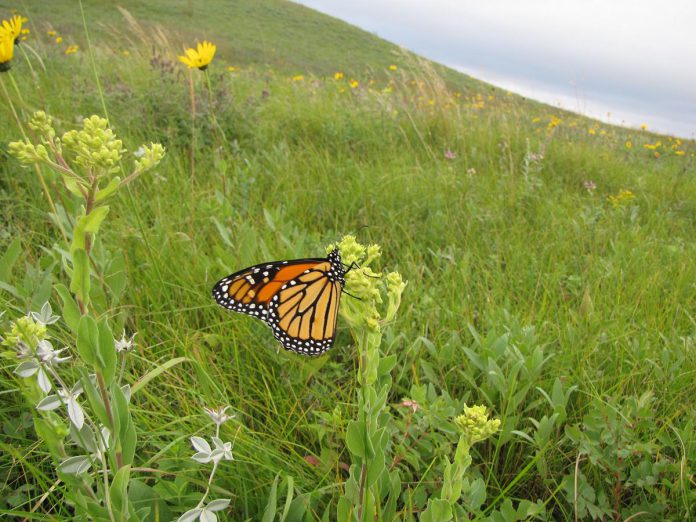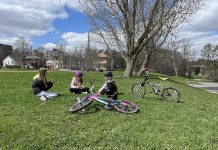
If you’ve recently travelled along the trail network in Kawartha Lakes, you may have noticed patches of ground vegetation have been left untouched.
According to a media release from the City of Kawartha Lakes, city staff have been doing this intentionally — especially patches around milkweed plants — to sustain and support monarch butterfly and caterpillar habitat.
While milkweed was often considered an unwelcome weed in the past, it is critical for the survival of the threatened pollinator. Without milkweed, monarch butterflies cannot complete their life cycle and their populations will continue to decline.
While monarch butterflies consume nectar from a variety of flowering plants, the milkweed plant is the only host plant that supports a monarch’s full life cycle from egg to caterpillar to butterfly. Monarch caterpillars feed exclusively on the leaves of milkweed, which also provide them with shelter.
Four to eight days after the female monarch lays its eggs on milkweed leaves, the eggs hatch and the distinctively striped monarch caterpillars emerge. The caterpillars are eating machines, feeding on the leaves almost constantly, pausing only five times to shed their skin as they grow almost 3,000 times their birth weight in about two weeks.
The caterpillars then enter the pupa state and, about 10 days later, emerge as fully grown adult monarch butterflies.

The City of Kawartha Lakes’ monarch-friendly initiative along the trail system will continue for the rest of the summer.
Once the adult butterflies have migrated south in the fall, city staff will re-visit the untouched patches to complete mowing.
Kawartha Lakes is officially recognized as a Bee City by Bee City Canada because the city supports healthy pollinator populations and ongoing efforts to preserve and create pollinator habitat.


























